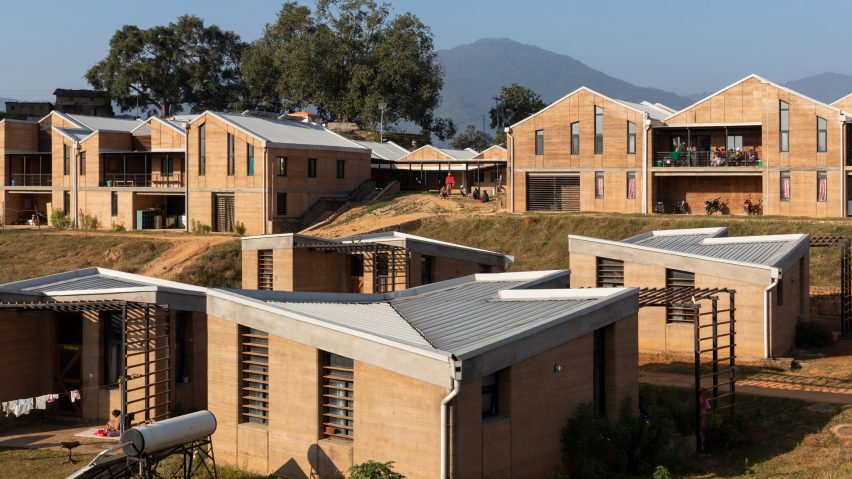
Sharon Davis Design builds rammed-earth hospital in Nepal
Bayalpata Hospital is a medical complex in Achham, Nepal, built from rammed earth by American architecture office Sharon Davis Design.
Serving one of Nepal's poorest and most remote regions, Bayalpata Hospital replaced an old clinic that was too small for the number of patients needing treatment.
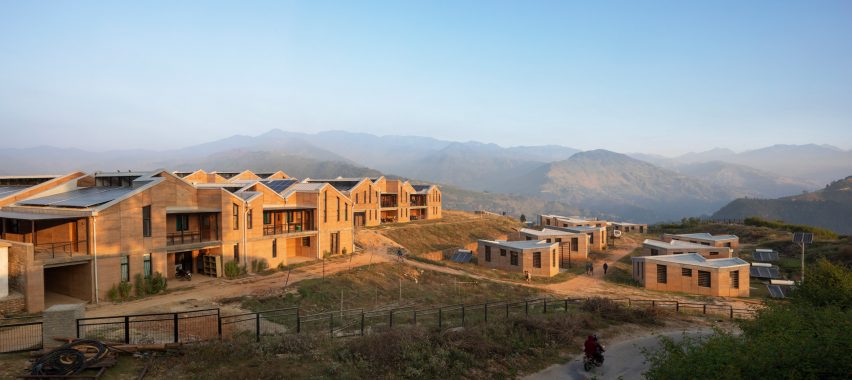
Five medical buildings and an administrative block form the campus on a hilltop in the Seti River Valley. The gabled forms surround shady courtyards for patients to sit in while waiting to receive healthcare.
The development also includes 10 houses and an eight-bed dormitory for hospital staff to live in.
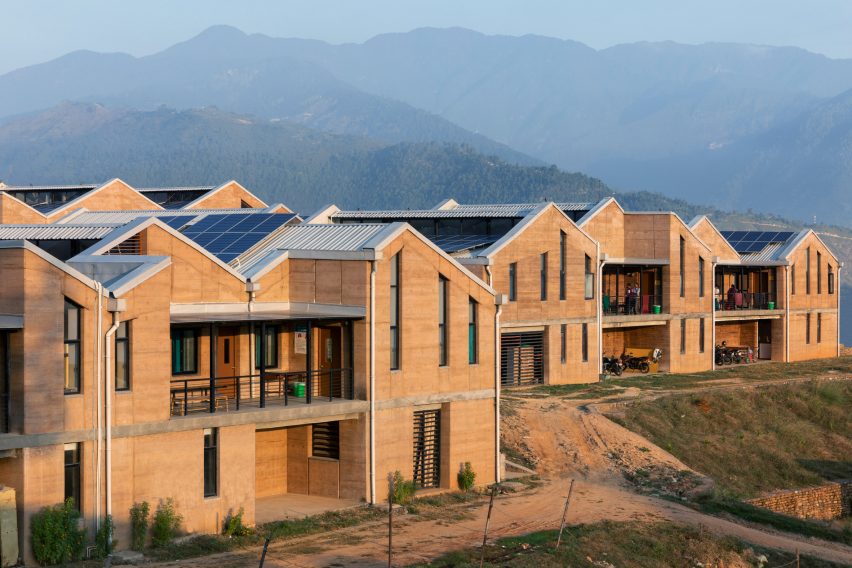
New York-based Sharon Davis Design worked with non-governmental organisation Possible Health and the Nepalese government on the project, which aims to increase access to affordable healthcare in the area.
In Nepal, 45 per cent of the population lives below the poverty line, according to the World Health Organisation (WHO). The ratio of doctors to patients in rural areas such as Achham is one to 18,000.
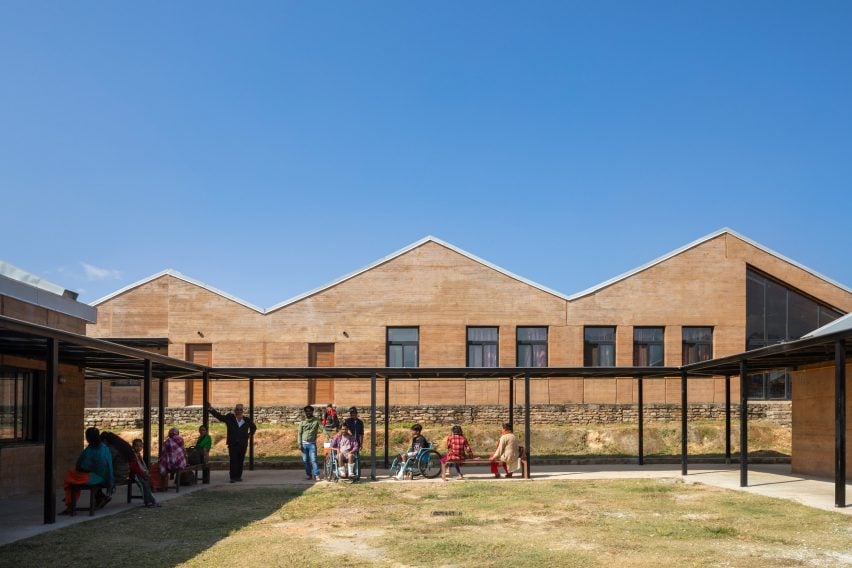
Using rammed earth was a way of making the rural hospital complex, which is designed to treat 100,000 patients a year, both low cost and more sustainable.
"We see this project as a model of how rammed earth, and other vernacular materials, can be utilised to create modern architecture," said studio founder Sharon Davis.
"Without local materials, this project may not have been possible because of its incredibly remote location – a 10-hour drive from the nearest regional airport and a three-day drive on narrow, mountainous roads from the nearest manufacturing centres around Kathmandu."
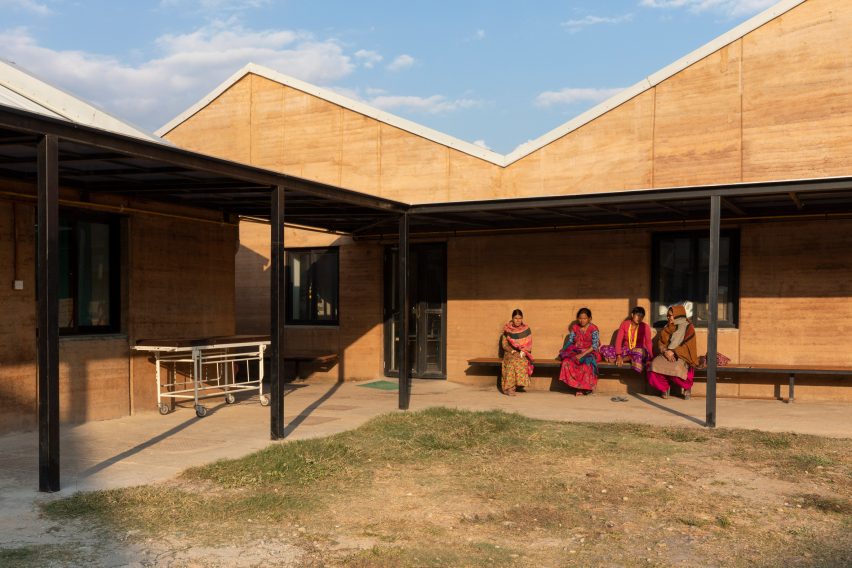
Reusable plastic formwork was used so the team could build the hospital campus quickly employing untrained workers from Achham.
Local stone is used for the foundations, retaining walls and paths. Wood from the indigenous sal tree was used for the exterior doors and louvres over windows, as well as furniture indoors.
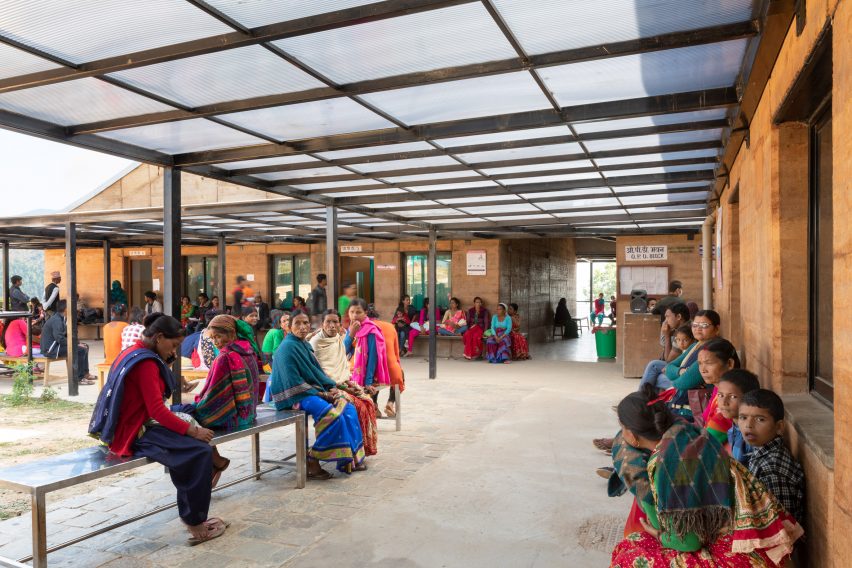
For the walls soil from the site was mixed with a small amount of cement to make the structure more durable and able to withstand the frequent seismic activity in the area.
Sharon Davis Design also chose rammed earth to help give Bayalpata Hospital's facilities a warm and non-clinical feel. As many homes in the area are also made from earthen walls, it gives patients a calmer and more familiar experience.
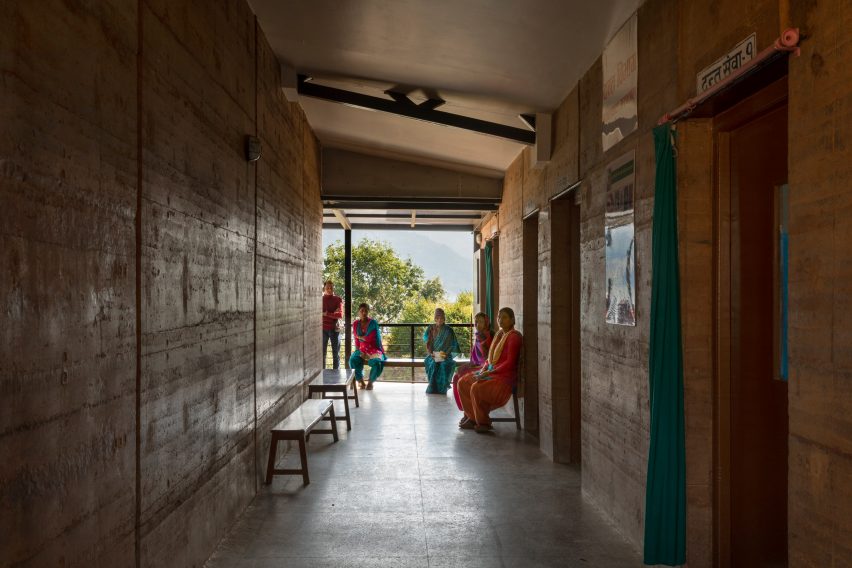
Within the main buildings tall windows frame views of the terraced hillsides, and clerestory glazing brings in natural light while retaining privacy.
The courtyards act as informal waiting rooms, and patient rooms all have access to a garden or balcony.
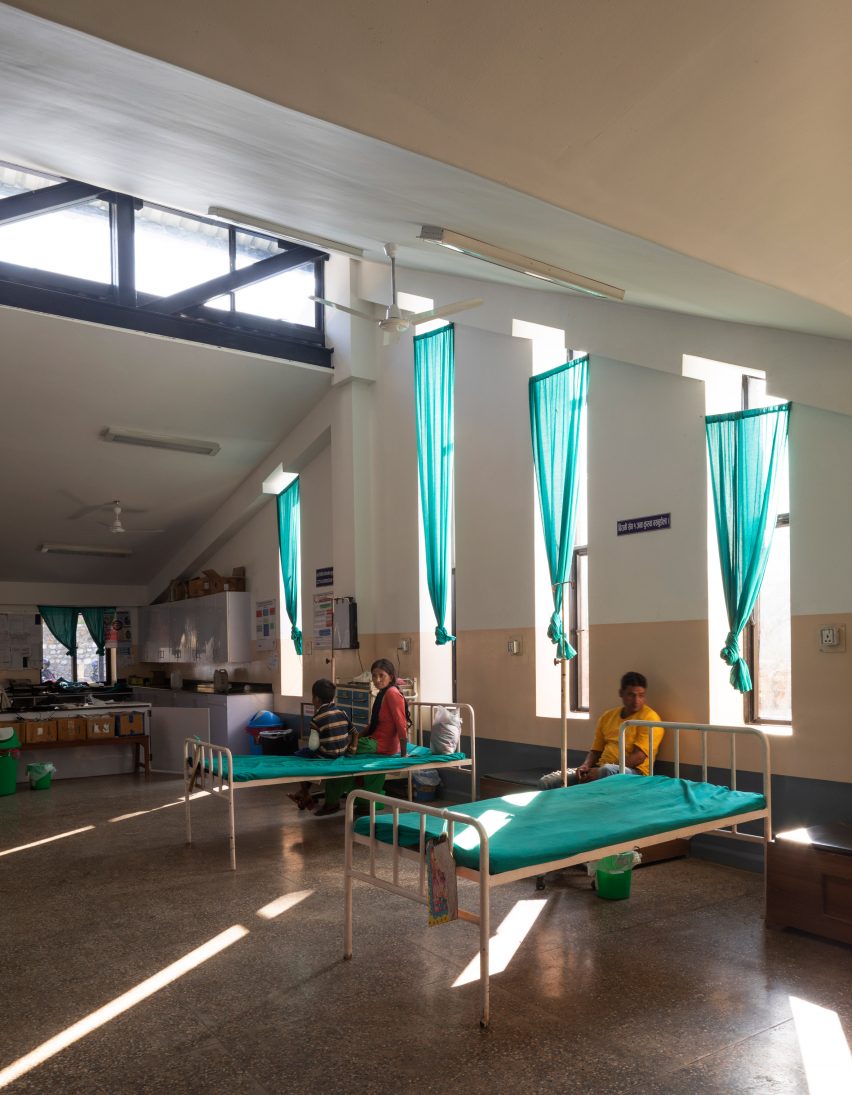
Bayalpata Hospital includes emergency medical facilities, two operating theatres for surgery, inpatient and outpatient facilities and antenatal provisions.
It also has a pharmacy, radiology equipment and a laboratory. There is a 60-seat canteen to serve all of the medical staff who live on site, some with their families.
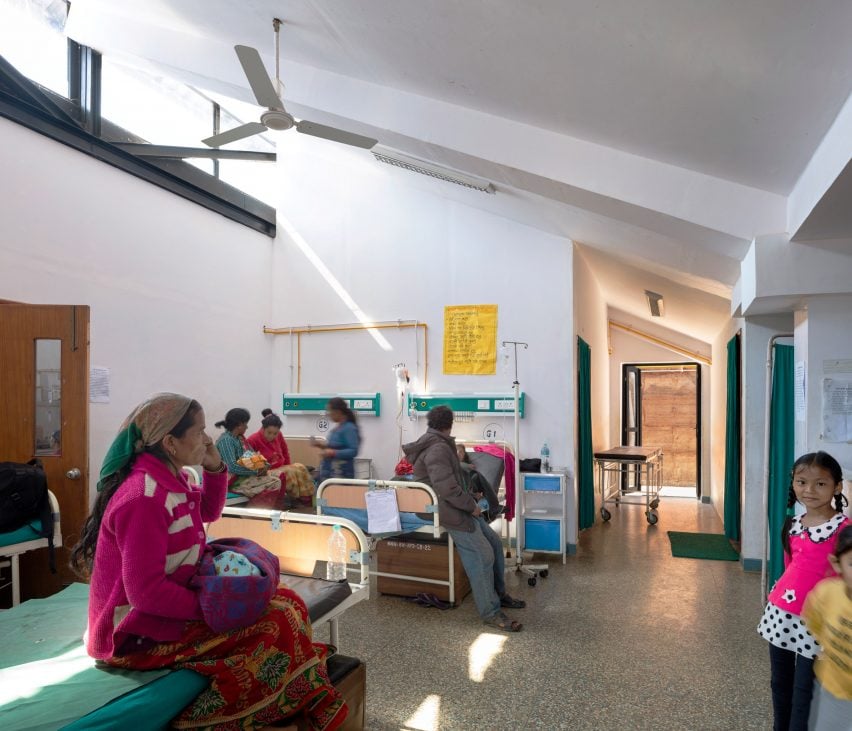
Solar panels on all of the south-facing roofs of the complex help power the hospital, while passive heating and cooling means only the surgery rooms need mechanical air conditioning.
Insulated roofs retain heat gain in winter and stop rooms from overheating in summer, while breezes can waft through from the courtyards, aided by ceiling fans.
The campus has its own water supply and a network of terraces and bioswales help stop soil erosion in the monsoon season.
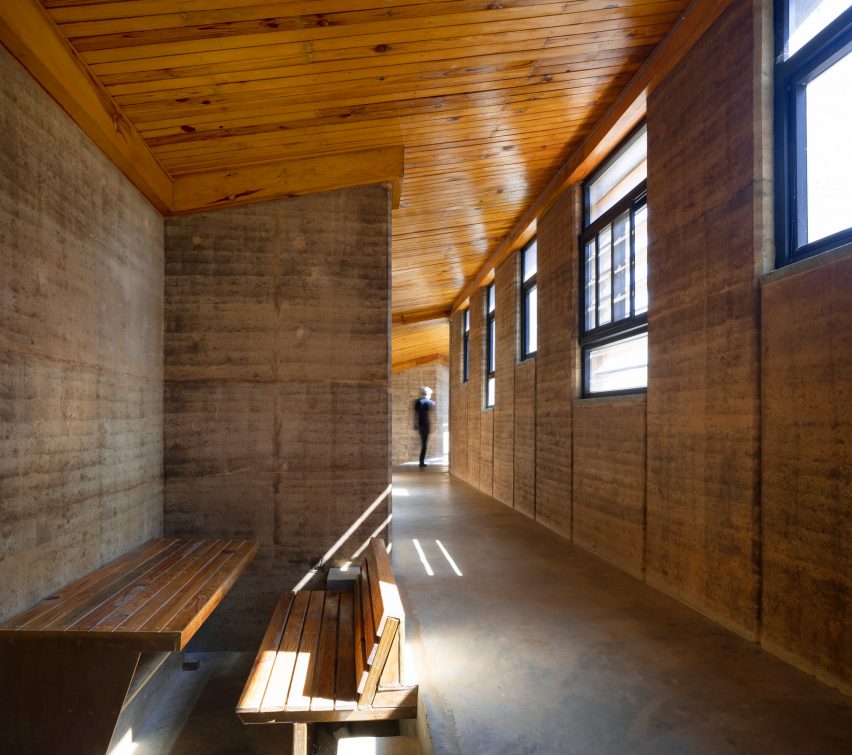
Founded in 2007, Sarah Davis Design is based in New York and designs buildings for non profits around the world.
Another project that use rammed earth include an earthquake-resistant house in China by the Chinese University of Hong Kong, while New York architect Marc Thorpe plans to use the material to build an accommodation complex in Senegal.
Photography is by Elizabeth Felicella.